Icewind Dale: Rime of the Frostmaiden is all about horror and eerie encounters in the snowy wastes—with a few lighthearted interludes thrown in to keep the tone adventurous. Still, just like how reading the Wikipedia summary of a horror movie isn’t scary, running a horror encounter as-written isn’t enough to scare and excite your players. As a DM, you need to know how to create a mood of dread with your words, your atmosphere, and your players’ buy-in.
Creating Horror through Voice
The main way that Icewind Dale: Rime of the Frostmaiden creates horror is through words. It’s a book, after all, that makes sense! Many of the right words have been handed to you on a silver platter, through boxed text and in descriptive text. If you want to know how to say words in a way that absolutely drips with malice and malevolence, listen to films and radio dramas by the old masters of horror: Boris Karloff, Christopher Lee, Peter Cushing, and Vincent Price, to name just a few. Try to emulate the way they say words. Feel the weight and cheeky darkness that fills every syllable. Listen for the timing of their phrases, how they pause ever so slightly upon certain words to add drama to what they’ll say next.
Their delivery may feel campy or overwrought these days, but D&D is a game well-suited to a little bit of B-movie cheese. Rime of the Frostmaiden may have been inspired by films like The Thing and books like At the Mountains of Madness, but you can use your words and tone of voice alone to inject some gently campy, Hammer Horror-style spookiness into your game.
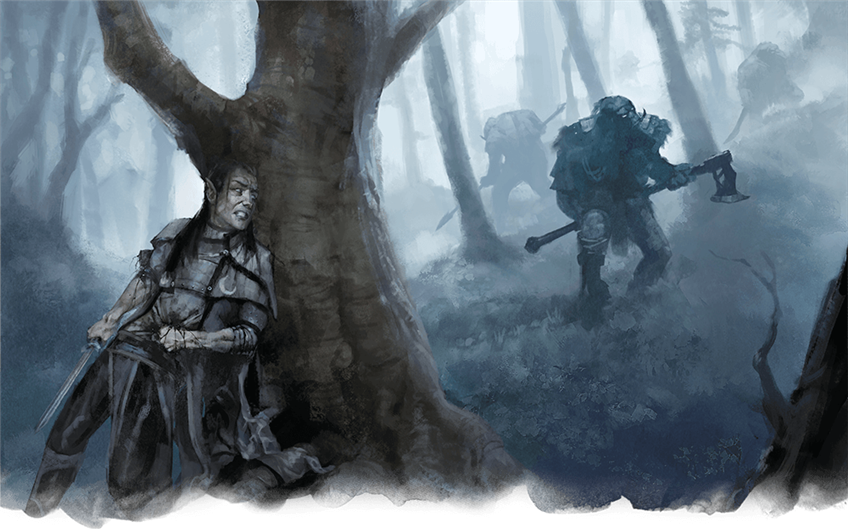
Creating Horror through Atmosphere
Music, temperature, isolation, and lighting all contribute to horror. Imagine watching a scene from your favorite movie, but the quiet, discomfiting soundtrack of discordant strings and atonal bells is replaced with silence. Even though silence can be scary in its own right, it can feel like there’s something missing. Music is a powerful tool in the hands of a Dungeon Master, and you can use it to create tension, pulse-pounding panic, or any number of other powerful emotional sensations within your players. Using tools like Syrinscape or even just an MP3 player hooked up to a Bluetooth speaker can transform your gaming room into a chamber of claustrophobic horror.
By using lights, you can amplify this effect even further. Colored LEDs are somewhat over-the-top, but by installing a few color-changing lights, you can invoke the chilly blues of Icewind Dale when your players venture onto the ice fields, or turn up a warm red tone when they’re relaxing in an inn in Ten-Towns. You can even use the transition between “normal” lighting and colored lighting to mark when you’re playing and everyone should focus versus pre-game, post-game, and break time.
Of course, if using color-changing lights is an unnecessary extravagance, you can still use lights to create tension. Keeping a light above your table, and dimming the lights around your table, can create the feeling of being in a smaller space than you actually are. That alone can be enough to evoke feelings of fear—or at least of the game being “serious business.”
If you’re playing D&D remotely—as many people are during the COVID-19 pandemic—it may be hard to create an immersive atmosphere of eerie darkness and isolation. This is mostly because players are sitting in the comfort of their own rooms, in bright lights, and there’s no spooky music being piped into their headphones. But it’s also because playing D&D digitally is inherently distracting. It’s hard for players to focus in and hang upon your every haunting word when they have a web browser open, there are pets or family members vying for their attention, and the clutter of their everyday lives are intruding upon their gaming space.
If you’re in this unfortunately (and likely) circumstance, focus on highlighting the immersive elements that you can control. During play, use your video call service (like Zoom or Discord) to send your players images of the dark, frigid, and agoraphobic wastes of Icewind Dale, and of the grisly and gruesome creatures that long to tear them limb from limb. Use virtual tabletop tools to use maps (even if you don’t track movement tactically) to better ground them in the world that they’re living in.
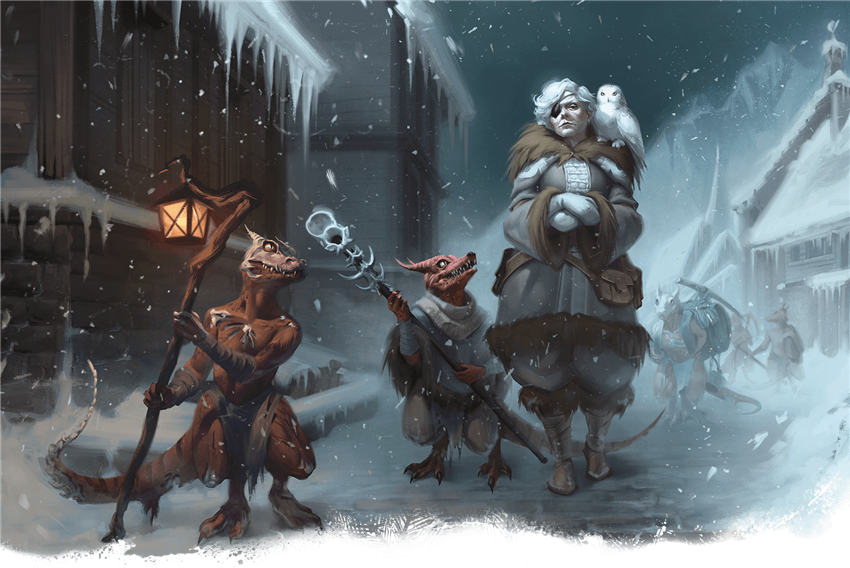
Creating Horror through Player Buy-In
D&D is a game of collective imagination. The more players want to be scared, the more likely they will dream up images that will scare them. Even players that don’t want to be scared a lot will have fun as long as they’re willing to be scared a little. One thing that you need to establish from the very beginning is that everyone you’re playing this adventure with will have fun being scared. If there are players that want to opt out of horror entirely, then all the hard work you’ve done with your voice and with the atmosphere will be for naught.
While playing D&D, emotions are a force multiplier. One person loving the horror is fun, but two people engrossed in the macabre is more than twice as fun, and three is more than three times as fun—and so on. If all of your players but one are loving the spooks, but that one person is adamantly opposed to being scared, it’ll bring down the overall fun of the group, not just their own fun. This isn’t to cast the anti-horror player in a villainous light; they’re just in a game that doesn’t suit their playstyle.
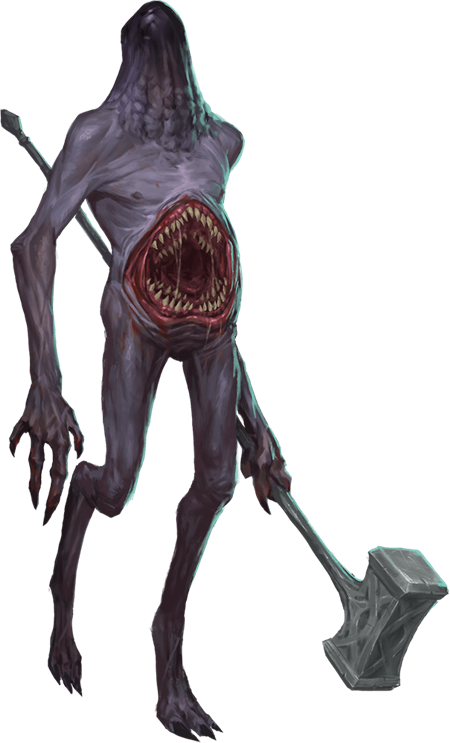 The best thing you can do to ensure that everyone has a good time from the start is to call a session zero and discuss what you and your players like about the horror genre and what you dislike about it. What horrific themes are fun for everyone to explore, and which ones are so deeply unpleasant that touching on them in-game would make the game worse. Icewind Dale: Rime of the Frostmaiden includes horrific elements including:
The best thing you can do to ensure that everyone has a good time from the start is to call a session zero and discuss what you and your players like about the horror genre and what you dislike about it. What horrific themes are fun for everyone to explore, and which ones are so deeply unpleasant that touching on them in-game would make the game worse. Icewind Dale: Rime of the Frostmaiden includes horrific elements including:
- Alien gestation (chestburster-style)
- Buried alive (under an avalanche or a cave-in)
- Brainwashing
- Freezing to death
- Inbreeding and deformities
- Longing for death
- Madness
- Missing limbs and extremities (from frostbite)
- Murder
- Possession
You may find other elements that you want to talk with your group about as you play through the game. Even though it “spoils” a big reveal, it’s worth holding a supplemental Session Zero to talk about new horrific content that you want to include to make sure that no one in your group has a major (or minor!) phobia that they haven’t told you about.
If you ever find yourself worrying that one or more of your players aren’t enjoying the genre of game you’re running, it may be incumbent upon you as the Dungeon Master to talk to them. Initiating conversations like this can be stressful, since you don’t want to come into emotional conflict with your friends, but calling up a new Session Zero and talking out any problems that you think have arisen will save you a lot of awkwardness and unhappiness in the long run.
Don’t Forget to Break the Tension
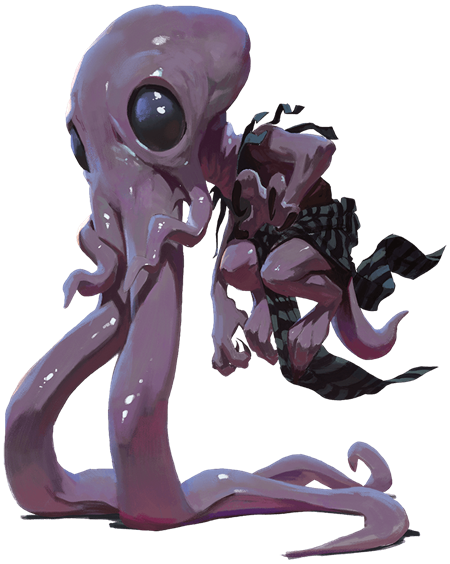 Don’t let your horror campaign become a dirge! If your campaign is a pressure cooker of tension and despair the entire time, you and your players will start to feel stressed out—and not in a fun way. Fortunately, it’s the natural state of D&D players to want to make jokes and have lighthearted fun while playing, and Icewind Dale: Rime of the Frostmaiden encourages those instincts every now and then by including moments of humor amidst the suspense.
Don’t let your horror campaign become a dirge! If your campaign is a pressure cooker of tension and despair the entire time, you and your players will start to feel stressed out—and not in a fun way. Fortunately, it’s the natural state of D&D players to want to make jokes and have lighthearted fun while playing, and Icewind Dale: Rime of the Frostmaiden encourages those instincts every now and then by including moments of humor amidst the suspense.
Finding the perfect balance between tension and levity is no easy task, and the correct ratio of each is different for every group—and every person! The only way you’ll be able to get it right is by trying things out and learning from your mistakes. You (or a friend) might break the tension just before a major reveal, and deflate a moment you worked hard for. This is a bummer, but unless it happens all the time, it’s not a problem. If your campaign is plagued by constant tone issues, it’s probably worth revisiting your Session Zero and talking this out with your players. Constantly breaking the dark tone of the story might be a sign that your players really just want to play a more lighthearted adventure—or, it could be a series of unfortunate tonal mismatches. The only way to know is to talk it out like friends.
What kind of spooky stories are you most excited to tell in your D&D campaign? Let us know in the comments!
Create A Brand-New Adventurer Acquire New Powers and Adventures Browse All Your D&D Content
 James Haeck is the lead writer for D&D Beyond, the co-author of Waterdeep: Dragon Heist, Baldur's Gate: Descent into Avernus, and the Critical Role Explorer's Guide to Wildemount, a member of the Guild Adepts, and a freelance writer for Wizards of the Coast, the D&D Adventurers League, and other RPG companies. He lives in Seattle, Washington with his fiancée Hannah and their animal companions Mei and Marzipan. You can find him wasting time on Twitter at @jamesjhaeck.
James Haeck is the lead writer for D&D Beyond, the co-author of Waterdeep: Dragon Heist, Baldur's Gate: Descent into Avernus, and the Critical Role Explorer's Guide to Wildemount, a member of the Guild Adepts, and a freelance writer for Wizards of the Coast, the D&D Adventurers League, and other RPG companies. He lives in Seattle, Washington with his fiancée Hannah and their animal companions Mei and Marzipan. You can find him wasting time on Twitter at @jamesjhaeck.








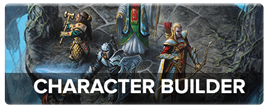
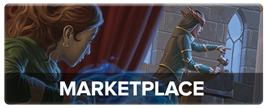
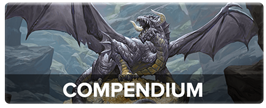
-
View User Profile
-
Send Message
Posted Sep 30, 2020i'm planning on running a dark fantasy campaign with an edge of horror. This is useful, but i don't know how to keep up the stakes when the PC's reach higher levels due to ground breaking magic. Any advice?
-
View User Profile
-
Send Message
Posted Oct 1, 2020So, what I'm doing with my guys is having magic function unreliably due to the everlasting rime. The weave, the field that casters manipulate to produce magic, is very drained and stretched by aurial's nightly efforts to stop the sun rising.
For example, my druid has just realised that his goodberry sprout is only producing four berries instead of the usual ten, and it's an unhealthy looking plant that is twisted and misshapen.
Teleportation magic is wildly unpredictable, sometimes working over shorter distances, sometimes dropping them in a totally different place altogether. Magical escape from the Dale is all but impossible, and walking out is met with impenetrable blizzards.
By applying the rule that all magic is weakened, I'm amplifying the sense of isolation and scarcity. They don't yet understand why it's happening, but it gives me a lot of opportunities to describe how it goes wrong or becomes twisted. After all, is there anything scarier than when your own abilities start to fail you?
-
View User Profile
-
Send Message
Posted Oct 1, 2020In a video game, where it's happening in real time that can be quite scary.
In a turn-based tabletop game, that can easily wind up feeling like you're being arbitrarily punished for choosing to play an Arcane Trickster instead of a Scout.
-
View User Profile
-
Send Message
Posted Oct 4, 2020Thanks for the advice
-
View User Profile
-
Send Message
Posted Oct 5, 2020my guess is constatnt tension building. for example imagine walking through a so-called "haunted asylum" only to not run into anything at all. the whole time you're tense and paranoid but only to find out you were never in danger
so for lesser horror but more darkness maybe have the "threat" of danger out there but it requires the players to move quickly and quietly in order to get away. or they go to a town thats completely abandoned and the whole time create the illusion that something is watching them. the players will probably think this from the beginning because of how empty the town would be. to give them some relief they turn around to see whats moving behind them they see that its some stray animal that runs off
-
View User Profile
-
Send Message
Posted Oct 5, 2020Oh, two very nice suggestions. Thank you, I will definitely play these into my Icewind Dale adventures.
-
View User Profile
-
Send Message
Posted Oct 9, 2020I would suggest making a Discord server! Inviting a bot to your server like Groovebot or something similar gives everyone a chance to adjust the volume themselves. There is still face cam features if that is a big thing to your group too.
-
View User Profile
-
Send Message
Posted Oct 12, 2020Great idea with the color switching LED, never thought about it!
-
View User Profile
-
Send Message
Posted Oct 12, 2020The DM does not need to show the image of the squidling, nor describing it as little, anime style pet mind flayer. Leave room for imagination, then the mind of your players will fill the gaps with their worst nightmares.
-
View User Profile
-
Send Message
Posted Oct 14, 2020What if I want to be a jerk without creating terror?
-
View User Profile
-
Send Message
Posted Oct 14, 2020simple everything is a mimic auril the frostmaisden icy mimic whatever lurks under the ice tons of mimics thats what! The entire icy TUNDRA IS A MIMIC *evil gm laugh*
-
View User Profile
-
Send Message
Posted Oct 16, 2020Did you just say puffin forest?!
-
View User Profile
-
Send Message
Posted Oct 16, 2020its a dnd youtuber
-
View User Profile
-
Send Message
Posted Oct 16, 2020I know who Puffin Forest is.
-
View User Profile
-
Send Message
Posted Oct 18, 2020My "Depth of Winter" adventure set my players against a deadly cult in the harshest storms of Winter. It was amazingly effective. Just the struggle to get to the village beset by cultists made them think. The village they thought to rescue was abandoned, which led to some creepy moments. In the end, my players were more concerned with rescuing the townsfolk than with killing the cultists. My players were moved by the townsfolk erecting a shrine in their honor. I think we need this in mind: the players are not just "murder hoboes." They want to do good and a little recognition for their efforts goes a long way.
-
View User Profile
-
Send Message
Posted Oct 20, 2020Find some horror-lite music? I don't know how your table is set up. Try to maintain the mood, but the ambiance can make a huge difference. So, add music when there is definitely some horror, but the presence of SOMETHING, like, one of the senses being stimulated might help to give the feeling that it remains quite dark. But, the horror is turned from 8 to a 7.
That is my theory on it, worst that's gonna happen is it is not going to go according to plan. (Plus, that timely music que when the soundtrack does something that cues with the game allows for some periods of comic relief).
-
View User Profile
-
Send Message
Posted Oct 23, 2020what kind of music should i use.
-
View User Profile
-
Send Message
Posted Oct 24, 2020Try looking into some Bloodborne, Icewind Dale, PoE: The White March, The Witcher (one that is my preferred). There should be a few songs off of those that you might be able to use.
-
View User Profile
-
Send Message
Posted Nov 14, 2020I really wish you had included more elements of horror in this article. There is a lot to be said for well designed horror stories. Jump scares and "deformed" humanoid-looking creatures are really just the tip of the iceberg.
What about playing with the PCs' sense of trust? Previously trusted NPCs turned into traitors, use high level illusions like Hallucinatory Terrain combined with trap spells like Guards and Wards (6th l.) or Glyphs of Warding (3rd l.). Have them think they are getting into town for R&R at the local tavern, kicking back with some ale but have THAT be an illusion as well; they're actually just in a dungeon drinking the blood of dead villagers.
Parodies of the horror genre are so common nowadays because the usual horror tropes are too common and too easily spotted by people who have seen horror movies. For your players to actually feel scared, think about what scares you and create scenarios using that knowledge and the PC's in-game experiences, don't just rely on pre-generated one-size-fits-all so-called Horror stories.
-
View User Profile
-
Send Message
Posted Jan 15, 2021higher level play is always difficult due to magic. my recommendation is talk to your players. if you want to run the game as raw use casters to counter somethings or use terrain to make them use spell slots to resist the heat, cold or fly over an obstacle. keep the number of rests down and remember to occasionally attack them at night to prevent a long rest.
exhaustion is your friend. don't over use it but only six levels of exhaustion will kill someone at any level and using spells to fix it drains on the number of castings. remember they still have to fight things too. so draining them down a little before fighting can help. use random minions to keep them on their toes they might not do much damage but minions can be a pain or use a high damage low hp minion to make them heal randomly.
environmental effects can vary widely they might have to worry about acid, cold, fire or necrotic. this can cause disaffirmation or maybe disadvantage in situations. Also remember to sometimes debuff them with monsters like shadows, mindflayers or basilisks a couple bad rolls against these creatures no matter how high of level can be really bad.
Debuffs to the players can keep an edge on players. dont over use them or they will get frustrated but an apply timed debuff can make something challenging that would otherwise easy encounter. mix things up if they have fire resistance they might be fine for the first part of a session where they are in a fire swamp but does nothing to the biting cold of the ice lake or acid of bog. higher level player might find this easy until you throw some monsters into the mix where they have to survive the environment and the monsters or minions